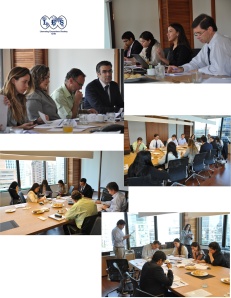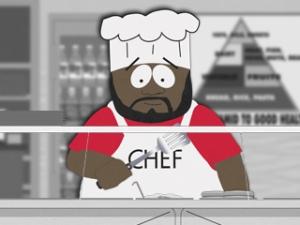My daughter is obsessed with YouTube snippets of Sesame Street –every night she makes either my husband or me watch at least a few of them before we tuck her into bed. And by a few, I mean as many as she can sucker us into letting her watch before we once again say, “This is the last one; then bed” and truly enforce it regardless of her squeals for more Elmo.
Having seen most of the universe of these Sesame Street snippets, I am realizing that not only are they starting the process of teaching my daughter core concepts, but they are helping reinforce some important adult versions that, at times, you forget on the path to getting your MBA.
The three Sesame Street snippets that are brought to me this past week by the letters MBA are Healthy, Stubborn, and Balance.
In the Healthy snippet, celeb Ellen Pompeo and Elmo remind me that “taking good care of yourself” is important and show me that there are “lots of good ways” to do it, including eating fruits and vegetables as well as getting proper rest. Ruh-roh. In the last week, I’ve officially eaten out of the vending machine for my meals twice (which incidentally, violates general healthy eating habits as well as one of my New Year’s resolutions), and I’ve stayed up till 2-3am doing schoolwork 3 out of the last 4 nights (which merely violates the laws of good sense). As I slipped a banana into my bag this morning as a snack, Elmo would be tickled to know that I silently thanked him for the reminder.
One of my all-time fave Sesame St. characters, Oscar, also has been teaching my daughter about being “stubborn.” With all of our group presentations of late, I have needed some remedial consideration of the word “stubborn” as well. I literally stopped making a point in a meeting with one of my groups this past week, when I realized that I was embodying the definition of “stubborn.”
Apparently, being “stubborn” happens when “you only want to do what you want to do, and you don’t care what anyone else says and you won’t change your mind.” My presentation group was in the middle of discussing a pricing strategy: premium or competitive pricing. All of my other group members were advocating for competitive, and I was trying to hold out for premium. I realized after a while, that I only wanted to do what I wanted to do and I had no intention of changing my mind. Then Oscar and his grimy trashcan popped into my head. Ugh. I get it. And yes, competitive pricing can make sense now that I think about. Oscar 1, Stubborn Maria Teresa 0.
The last (and probably not least) Sesame Street snippet that has caught my attention is celeb Emma Stone and Abby Cadabby’s word of the day: Balance. Emma tells me that balance means when something “doesn’t fall over because it has equal weight on both sides.” My daughter the other day kept putting two of her picture books on her head – imitating Emma’s attempt at balance —and thinking it was hysterical when they kept falling off of her head. It took three of her attempts at “balance” before I even realized what she was doing.
Incidentally, it is usually when things start “falling off” my head before I realize how imbalanced I am between schoolwork and home life. While Abby Cadabby is trying to teach my daughter the literal application of balance, she is surreptitiously reminding me that when I so narrowly focus on the one side of the weight that is school, that you can very easily tip over when it isn’t balanced with the other side of home and family. Thanks, Abby. I haven’t fully figured out what manner of monster your character is as of yet, but I appreciate the reminder of the importance of balance.
So, although I am learning and exponentially growing in truly sophisticated and complex ways in my MBA program, taking the time to sit down and watch some good ole Sesame Street may reinforce some foundational blocks that are key to my ability to add more fancy blocks.
Now, if we can just get the Count to teach me about the Weighted Average Cost of Capital, I think I’d be set.



























